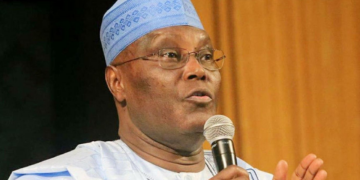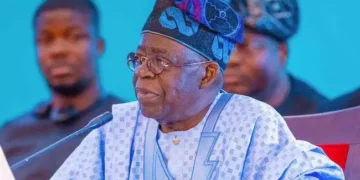Nigeria’s crude oil production surged past 1.8 million barrels per day (bpd) in July, marking a significant milestone for Africa’s top oil producer.
The achievement, announced by the chief executive of the Nigerian Upstream Petroleum Regulatory Commission (NUPRC), Gbenga Komolafe, comes after months of concerted efforts to bolster output in the face of numerous challenges that have beleaguered the sector in recent years.
Speaking at the 48th Society of Petroleum Engineers (SPE) Nigeria Annual International Conference and Exhibition (NAICE) in Lagos, on Monday, Komolafe stated, “We crossed the 1.8 million bpd mark on peak production last month, with average production hovering at 1.78 million bpd,” Reuters reports.
With the country relying on oil for nearly two-thirds of government revenue and over 80 per cent of its foreign currency earnings, the improvement in production is a crucial boost for Nigeria’s fiscal health and economic stability. Years of rampant oil theft, pipeline sabotage, endemic unrest in the Niger Delta, and chronic underinvestment had driven output well below OPEC quotas and strained the public purse.
He underscored the critical role this production uptick plays in Nigeria’s economy, which relies on crude oil for nearly two-thirds of government revenue and over 80 per cent of foreign currency earnings. These production gains are vital for stabilising our national economy.”
Komolafe attributed the recent progress largely to increased security efforts. He affirmed, “The output increase is largely possible due to the step-up in security operations in the Niger Delta region,” highlighting how intensified military operations and crackdowns on oil theft have made a tangible difference: “Widespread oil theft, unrest, and years of underinvestment had curtailed output and strained public finances before these measures.”
The NUPRC chief expressed confidence in sustainable further growth, stating, “We will continue working with stakeholders to sustain production gains and improve industry transparency.” He also linked the recent production numbers to a broader national goal: “This is part of a push to boost oil production by one million bpd to three million bpd.”
Komolafe reflected on the industry’s technological evolution, observing, “Times have changed. Our petroleum engineers have continued to add value from rudimentary tools and methods in the 1970s to today’s advanced engineering modelling software powered by machine learning and artificial intelligence.”
Regarding regulatory reforms, he explained, “Since the enactment of the Petroleum Industry Act, 2021, we have gazetted 21 key regulations to provide clarity that supports investment, streamlines administration, and aligns upstream operations with national and global priorities.” On the transparency drive, he pointed specifically to the Upstream Petroleum Measurement Regulations, asserting that these “promote transparency and accountability through technology deployment for accurate production measurement.”
Komolafe highlighted the sector’s environmental focus: “The Gas Flaring, Venting and Methane Emissions Regulations directly support sustainability by tackling emissions and entrenching decarbonisation.” He emphasised social inclusion, stating, “The Host Community Development Regulations enhance social inclusion and local participation in the energy value chain.”
Komolafe charged industry groups and professionals on collaboration and partnerships: “We charge SPE and other industry associations to accept the challenge of manpower development and contribute to repositioning the industry through targeted capacity-building.” He reinforced the focus on preparing for a low-carbon future, adding, “Our workforce must be prepared for the challenges that lie ahead.”
He remarked concerning supply chain and local content, “We have taken deliberate steps to create a regulatory environment that supports the growth of service companies, both international and indigenous, promoting local manufacturing and enhancing overall supply chain resilience.”
On the government’s ambitious production target, Komolafe declared, “With the concerted efforts of all, the presidential mandate on production increase is well within reach.” He also highlighted ongoing initiatives: “Last week, the Commission assembled industry practitioners to deliberate on a workable strategy to foster cluster development in shallow and deepwater areas, aiming to valorise stranded or marginally economic oil & gas resources through joint development strategies.”
Addressing sustainability, he outlined the NUPRC’s blueprint: “We are implementing the Upstream Oil & Gas Decarbonisation & Sustainability Blueprint anchored on seven critical pillars to future-proof the upstream sector and position it for investment attractiveness and global competitiveness.” He urged operators to collaborate, “We call on all Operators to incorporate decarbonisation measures in Field Development, Facility Engineering, and Production Operations to accrue long-term benefits.”
On the conference theme, Komolafe stated, “Building a sustainable energy future will demand trade-offs, innovation, and coordinated effort. The conversations here must be followed by action from all of us,” he said.





